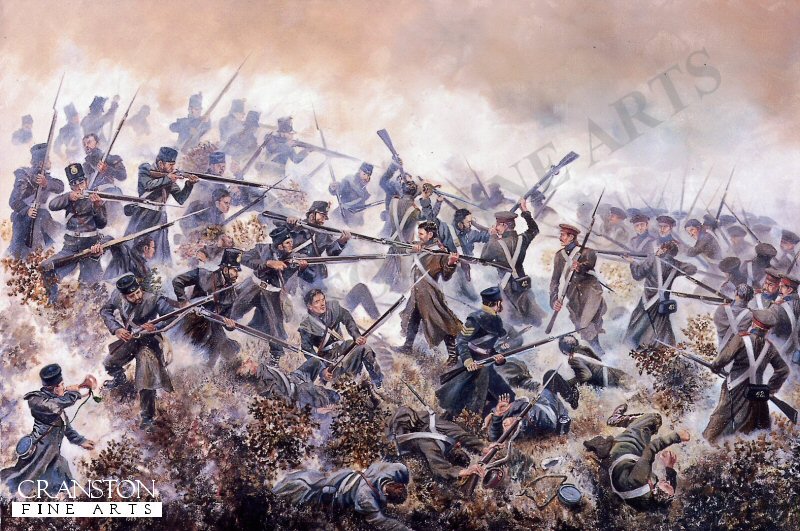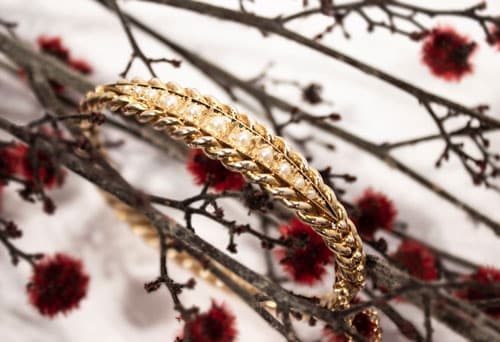
The sentimental power of hair used in jewellery lies in the contrast of the relic and its absence from the body. It is this contrast, of the relic which remains and the body that is lost, where we are poignantly reminded of a life. This sentiment is most sincere when we consider memorial jewellery exchanged between soldiers and their families. Military conflicts, from a historical perspective, often meant the bodies of fallen soldiers were lost to a foreign land and never returned home. Parents, spouses, children and friends would farewell their loved ones into battle, sometimes with no tangible reminder of their life after passing. It is in these circumstances that the true intimacy that human hair as relic is understood.

This locket is a rare example of the concept of jewellery as material memory. The outside of the locket features beautiful blue enamel work which would have been proudly worn by a loved one. Inside the locket is a lock of hair and inscription which reads;
"Capt. A.A Cartwright Rifle Brigade Fell at Inkermann Nov 5 1854"

This inscription gives us the identity of the personal relic and the circumstances under which they died. This hair belonged to Captain Aubrey Agar Cartwright, with the documentation of his military service commencing with his position as Second Lieutenant in the Rifle Brigade in 1842. He was awarded the South Africa medal for his service in Cape Town and served in the famous battles of Alma, Sebastapol and Balaklav. He lost his life at age 29 on the 5th of November 1854 at the Battle of Inkerman in the Crimean War. "The Battle of Inkerman saw fierce fighting hampered by thick fog, resulting in poor communication between the troops. Casualties were disproportionately high" (Royal Collection Trust, 2016).

The 20th Foot at the Battle of Inkerman, 5th November 1854 by David Rowlands
We see Captain Cartwright's death recorded below in the Rifle Brigade Chronicles next to the November 5th date entry.

From these military records we see the death of Capt. Cartwright recorded in a strictly factual manner. It is the material history of the locket, which gives us an emotional understanding of Aubrey Cartwright's life. Aubrey was unmarried and left behind his parents, Mary Anne Cartwright and William Cartwright, and siblings. The Cartwrights were an aristocratic family of Northamptonshire and owned a large amount of property in the district on Aynho, including Aynhoe Park - a country estate occupied by the Cartwright family for over three-hundred years. Detailed archives pertaining to the Cartwright family are kept at the National Archives. These records include detailed letters written by Aubrey Cartwright during his active service. The most poignant of these documents includes a handwritten letter from a fellow serviceman addressed to a Mr. William detailing the passing of Aubrey Cartwright in battle;
"It so happened that he fell close at my side, in fact so near that he... [undecipherable]... me in falling and I was probably the only person who heard his last sigh" (extract partially transcribed from letter).

Locks of Aubrey Cartwright's hair were sent at different times to his family. Aubrey enclosed a lock of his own hair in a letter to his mother, from his time spent in Alma. There is another lock of Aubrey's hair in the archive labelled "Mr. Cartwright hair removed from bullet". Through these archives we gain a sense of Aubrey Cartwright's acute awareness of the fact that his family may require a physical memento of his. From the Georgian era and throughout the Victorian era, the gifting of hair as keepsake was common practice. It is sorrowful to see that the hair enclosed in these letters eventually served their intended purpose, to be used as a personal keepsake of Aubrey Cartwright's life upon his death. We can make connections that the hair enclosed in letters to his parents and the additional fact of Aubrey being unmarried, lead to suggest that the locket would likely have been worn by his mother, Mary Anne Cartwright, in memory of her son lost to war. Further evidence of this is detailed in the meeting notes of the 49th meeting of the Aynho History Society in June 2012 with the below statement.
"Aubrey Agar Cartwright firstly fought at Boem Plaats in South Africa. He was then in the Crimean, which was close, hand-to-hand fighting in freezing conditions, with all the wrong kit in the wrong places. He was at Sevastopol, and then at Inkerman, where he was killed by a shot to the head, aged 29. A lock of his hair was sent back to his parents, and is in the Archive."
The creation of this item with such a detailed inscription and personal relic serves as material memory to the life of Aubrey Agar Cartwright. The emotional purpose of this jewellery item, is to mourn and to bring comfort to the wearer. The creation of this item with such a detailed inscription and personal relic serves as material memory to the life of Aubrey Agar Cartwright. It gives us insight into his life and service and also of the love and loss experienced by those he left behind.
This item is currently on display in our Kalmar Vault Collection at Kalmar Antiques.
Sources:
- Aynho History Society (27th June, 2012) "Minutes of the 49th meeting of the Anyho History Society held at Aynho Village Hall" MINUTES OF THE 44th MEETING OF AYNHO HISTORY SOCIETY HELD AT AYNHO VILLAGE HALL ON WEDNESDAY 25th JANUARY 2012
- Royal Collection Trust (2023), 'The battle of Inkerman 5 November 1854'; The Battle of Inkerman 5 November 1854 (rct.uk)
- Northamptonshire Archives Services (2023) 'Northamptonshire Archives Service | The National Archives









